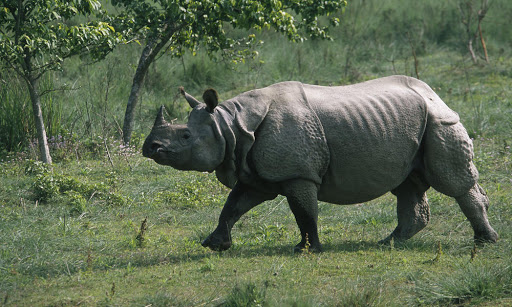Biodiversity & Environment
Parasitic Infections in One-Horned Rhinoceros
- 15 Oct 2020
- 4 min read
Why in News
Recently, the World Wildlife Fund (WWF) India has published reports titled ‘Prevalence of Endoparasitic Infections in Free-Ranging Greater One-Horned Rhinoceros’ for Assam and West Bengal.
Key Points
- Poaching is believed to be the main cause of death in rhinos, however, they also die of natural causes which have not been studied in great detail.
- Since 2017, the Rhino Task Force of Assam and WWF India have been undertaking steps to study pathogens found in fresh rhino dung samples in Assam, Uttar Pradesh, and West Bengal.
- Before this, there was no systematic study on the prevalence of disease-causing parasites and diseases caused by these in the rhino population in India.
- According to the researchers, habitat degradation can lead to an increased exposure to pathogens.
- Due to increasing livestock pressure on protected areas, there is a possible threat of pathogens getting transferred from domestic animals to wild animals.
- From the samples from Assam and West Bengal, the study concluded that parasites from four genera were present in an estimated 68% of India’s rhino population.
- The overall prevalence of endoparasites was 58.57% in Assam and 88.46% in West Bengal; results from UP are pending.
- Endoparasites are parasites that live in the tissues and organs of their hosts, such as tapeworms, flukes, and protozoans of vertebrates.
- The overall prevalence of endoparasites was 58.57% in Assam and 88.46% in West Bengal; results from UP are pending.
Greater One-Horned Rhino
- There are three species of rhino in Asia — Greater one-horned (Rhinoceros unicornis), Javan and Sumatran.
- Poaching for the horns and habitat loss are the two greatest threats to the survival of Asia's rhinos.
- The five rhino range nations (India, Bhutan, Nepal, Indonesia and Malaysia) have signed a declaration ‘The New Delhi Declaration on Asian Rhinos 2019’ for the conservation and protection of the species.
- Protection Status:
- Javan and Sumatran Rhino are critically endangered and the Greater one-horned (or Indian) rhino is vulnerable in IUCN Red List.
- All three listed under Appendix I (CITES).
- Greater one-horned rhino is listed under the Schedule I of the Wildlife Protection Act, 1972.
- Habitat of Greater One-Horned Rhino:
- The species is restricted to small habitats in Indo-Nepal terai and northern West Bengal and Assam.
- In India, rhinos are mainly found in Kaziranga NP, Pobitora WLS, Orang NP, Manas NP in Assam, Jaldapara NP and Gorumara NP in West Bengal and Dudhwa TR in Uttar Pradesh.
- Conservation Efforts by India:
- Recently, the Ministry of Environment Forest and Climate Change (MoEFCC) has begun a project to create DNA profiles of all rhinos in the country.
- National Rhino Conservation Strategy: It was launched in 2019 to conserve the greater one-horned rhinoceros.
- Indian Rhino Vision 2020: Launched in 2005, it is an ambitious effort to attain a wild population of at least 3,000 greater one-horned rhinos spread over seven protected areas in the Indian state of Assam by the year 2020.






